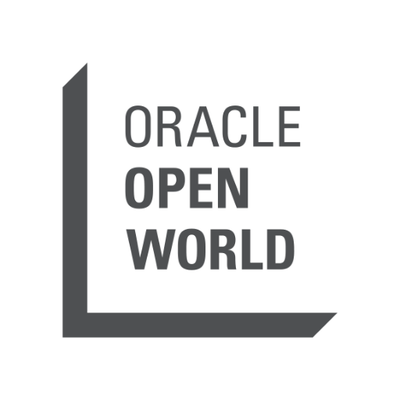| #Oratidbit Fast-Start Failover (FSFO) is a feature of the Oracle Data Guard Broker that enables an automatic failover to the standby database upon failure of the primary. FSFO can be configured in either an active or an Observer only mode. |
| #OrclEBS #OracleCloud Oracle E-Business Suite Cloud Manager provides a graphical user interface for creating, managing, configuring, migrating Oracle E-Business Suite environments on Oracle Cloud Infrastructure (OCI). |
| #OraTidbit You can use Oracle Enterprise Manager to discover and manage dedicated Autonomous Transaction Processing databases, if you are using Enterprise Manager version 13.3 with EM DB Plugin Bundle Patch 13.3.2.0.190731 or higher. |
| #OraTidbit #SQLDev Oracle SQL Developer Web provides a development environment and a data modeler interface for Oracle Autonomous Databases (ATP/ADW). |
| #OraTidbit #OracleCloud #OCI The minimum retention requirement for Archive Storage is 90 days. If you delete objects from Archive Storage before the minimum retention requirements are met, you are charged a deletion penalty. |
| #OraTidbit #OracleCloud #OCI Oracle Cloud Infrastructure offers 1-node DB systems on either bare metal or virtual machines, and 2-node RAC DB systems on virtual machines. |
| #OraTidbit #OracleCloud #OCI When you enable Data Guard for a virtual machine DB system database, a new DB system with the standby database is created. For bare metal DB system, DB system to be used as the standby must already exist before you enable Data Guard. |
| #OraTidbit #OracleCloud Oracle Functions is a fully managed, highly scalable, on-demand, Functions-as-a-Service platform, built on #OCI and powered by the Fn Project open-source engine. Access Oracle Functions using the Console, a CLI, and a REST API. |
| #OraTidbit #OracleCloud The #OCI Health Checks service provides high-frequency external monitoring to determine the availability and performance of any publicly facing service, including hosted websites, API endpoints, or externally facing load balancers. |
| #OraTidbit #OracleCloud The #OCI Monitoring service actively and passively monitor your cloud resources using the Metrics (to monitor resources) and Alarms (to notify you when these metrics meet alarm-specified triggers) features. |
| #OraTidbit #OracleCloud #ThinkAutonomous The data_pump_dir directory is available in an Autonomous database. You can now use CREATE DIRECTORY and DROP DIRECTORY commands to create and drop additional directories. |
| #OraTidbit The I/O calibration feature of #OrclDB is using the DBMS_RESOURCE_MANAGER.CALIBRATE_IO procedure- issues one megabyte of random I/O intensive read-only I/Os to the database files to determine the maximum IOPS and MBPS that can be sustained by the storage subsystem. |
| #OraTidbit #DB19c Real-Time Statistics feature is when a DML operation is currently modifying a table, Oracle Database dynamically computes values for the most essential statistics. The NO_GATHER_OPTIMIZER_STATISTICS hint prevents the collection of real-time statistics. |
| #OraTidbit #DB19c If real-time statistics are available, then you can access them using DBA_TAB_COL_STATISTICS and DBA_TAB_STATISTICS views. Real-time statistics are indicated by STATS_ON_CONVENTIONAL_DML in the NOTES column and SHARED in the SCOPE column. |
| #OraTidbit The Oracle Data Masking and Subsetting (DMS) pack of the Oracle Enterprise Manager (OEM) provides an automated, flexible, and easy-to-use solution that masks and subsets sensitive production data, allowing data to be shared safely across a non-production environment |
| #OraTidbit #OracleVM The Oracle VM Paravirtual Drivers for Microsoft Windows improve performance for network and block (disk) devices on Microsoft Windows guests running in a virtual environment on Oracle VM. |
| #OraTidbit #OracleVM Oracle VM provides support for Hybrid Columnar Compression (HCC) on Oracle Database Release 18c (or higher) with Oracle ZFS Storage Appliance and Oracle FS1 Series Flash Storage Systems. |
| #OraTidbit #OracleVM Enabling viridian support ensures improved performance for all Microsoft Windows guest operating systems on Oracle VM. Viridian support enables the exposure of Windows virtualization compatible entitlements to Microsoft Windows guest operating systems. |
| #OraTidbit #OracleVM Oracle Enterprise Manager Release 13.2 or later is required to manage Oracle VM Release 3.4.x. Oracle VM Manager integrates with OEM so that you can manage the entire Oracle VM environment from within OEM. |
| #OraTidbit #Vagrant is an open-source software product for building and maintaining portable virtual software development environments, for #VirtualBox, KVM, Hyper-V, #Docker containers, #VMware, and #AWS. |
| #OraTidbit #ThinkAutonomous Oracle Autonomous Database (ADW/ATP) allows CREATE DIRECTORY statement to create directories. If the file system directory exists then CREATE DIRECTORY only creates the database directory object. |
| #OraTidbit #ThinkAutonomous You can create directories in Oracle Autonomous Database (ADW/ATP). CREATE DIRECTORY command creates the necessary directories and subdirectories on the OS side for you. |
| #OraTidbit #ThinkAutonomous Autonomous Database (ADW/ATP) allows user directories. Since there is no OS access to ATP/ADW machines, use DBMS_CLOUD.LIST_FILES function to list files in a directory. Use DBMS_CLOUD.DELETE_FILE function to remove a file. |



